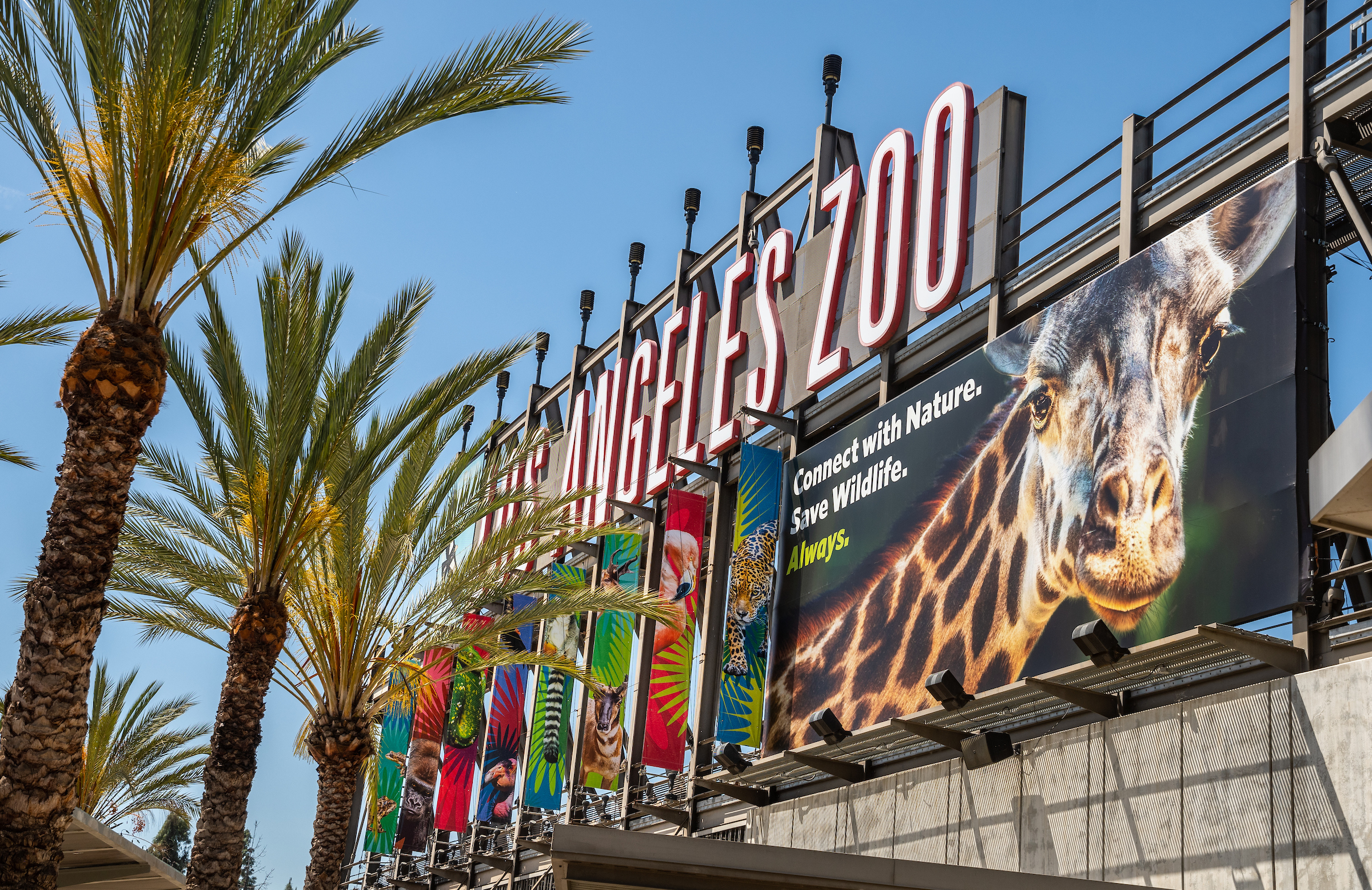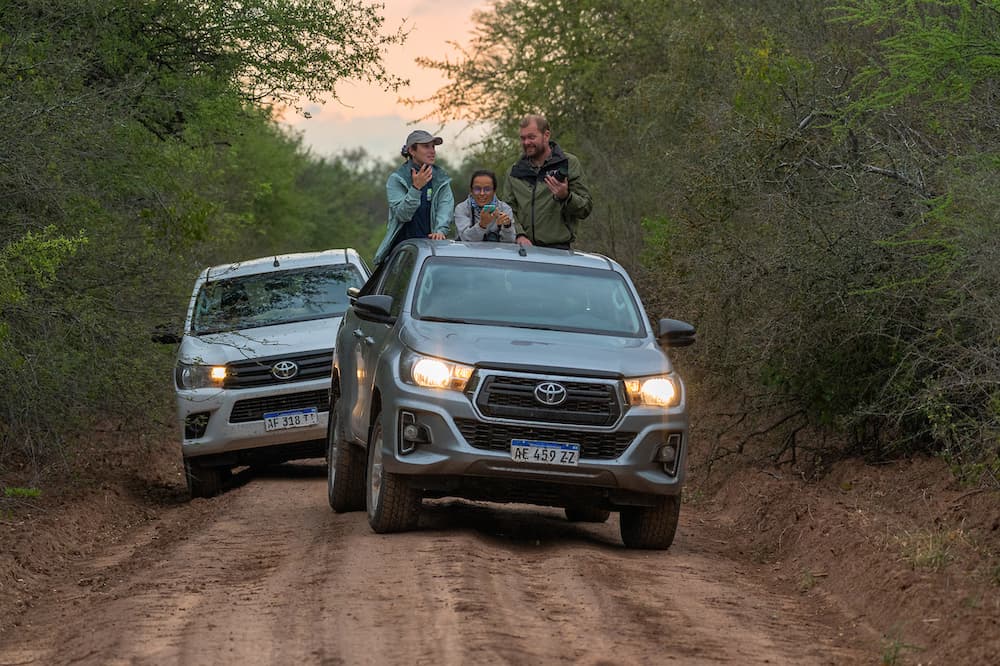
“During the pandemic, the three years from when it started until this year, I didn’t travel at all,” says Dr. Jake Owens, the Zoo’s Director of Conservation. “That was the longest period I had been in one place since I was 21. And suddenly I was thinking about what I’d normally done: just the night before, in 20 minutes I’d throw everything into a bag. That’s how I traveled; it wasn’t a big thing. This time I was asking myself a month beforehand, ‘Do I have the right shoes?’” he recalls. We’re all a little bit rusty, but for Owens, the rust isn’t a bad thing. “I love the discomfort that is field work and travel, because every time I do it, I feel more comfortable with whatever that thing is, and eventually it becomes so normal.”
So what is it like working in the field on the conservation projects that are so important for supporting endangered species? Journey with Dr. Owens through Argentina for his notes from the field on the sites, species, and friends he encountered during his most recent travel.
Ituzaingo
“My priorities have changed. Before it was going to these cool places doing this really cool stuff, and now it’s more ‘What’s the serious work that we can get out of it?’” On this trip, the serious work was giant otter conservation in Argentina, where Owens traveled to offer his expertise in consortium building, partnership development, and conservation planning to the newly forming International Giant Otter Alliance.
Officially, giant otters are currently extinct in Argentina, “except we’ve seen two in the past few years in Argentina, because they’ve swum down from Paraguay or Brazil. A giant otter doesn’t know where the boundary of two different countries is,” Owens says. Which means countries and organizations need to work together across boundaries—and the scope on these projects is global.
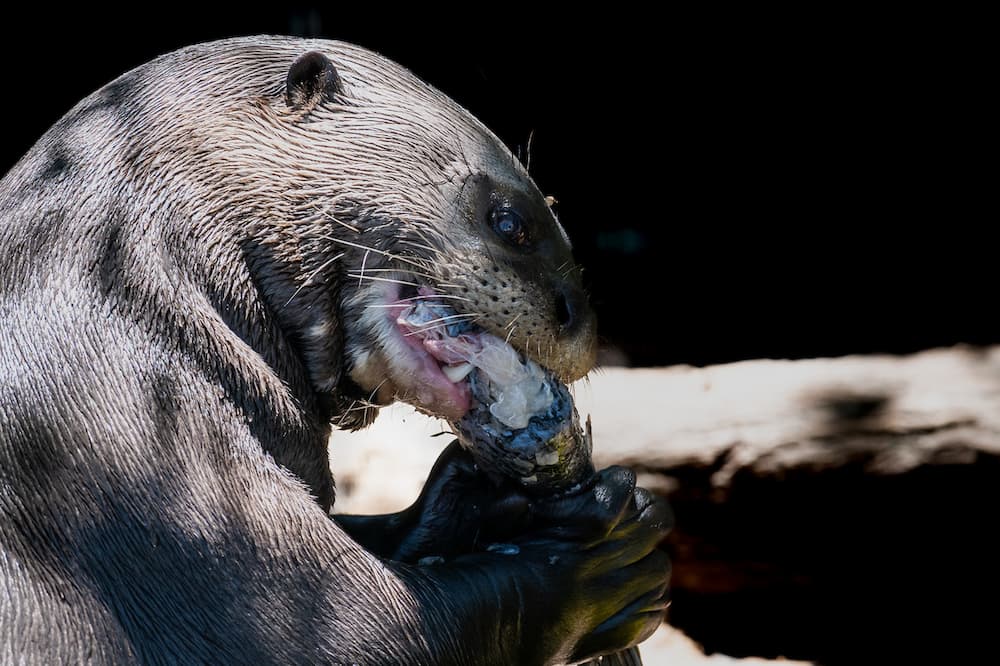
“So right now you’ve got giant otters and people doing giant otter conservation all over South America. And then zoos working with ex situ [outside of natural habitats] conservation in the United States and Europe. And so in Colombia, Brazil, Peru, Paraguay, Argentina—all these different groups are working on conservation. And there’s a lot of one-off relationships or those sorts of collaborations, but there isn’t a holistic, species-wide conservation group.” Shared access to knowledge resources, expertise, and funding sources has to be built and organized. Enter the Alliance: thirty people from different countries, coming together to work toward the conservation of giant otters.
Iberá
The formation of the Alliance—which will create stronger partnerships and more effective strategies—won’t interrupt the important work that is already underway. A giant otter reintroduction will be happening in Iberá National Park, where teams have been successfully reintroducing other species, including giant anteaters, deer, and jaguar.
Dr. Owens is on the conservation translocation specialist group for the International Union for the Conservation of Nature (IUCN), so he wanted to see the reintroduction plan for the offspring of two otters determined to be a breeding match. Seeing the plan in action includes making sure that the reintroduction site meets all the IUCN requirements and visiting the facilities and habitat in person. “We have an obligation to the animals to make sure they’re contributing to a project that has a high likelihood of success,” Owens explains, “and it certainly does.”
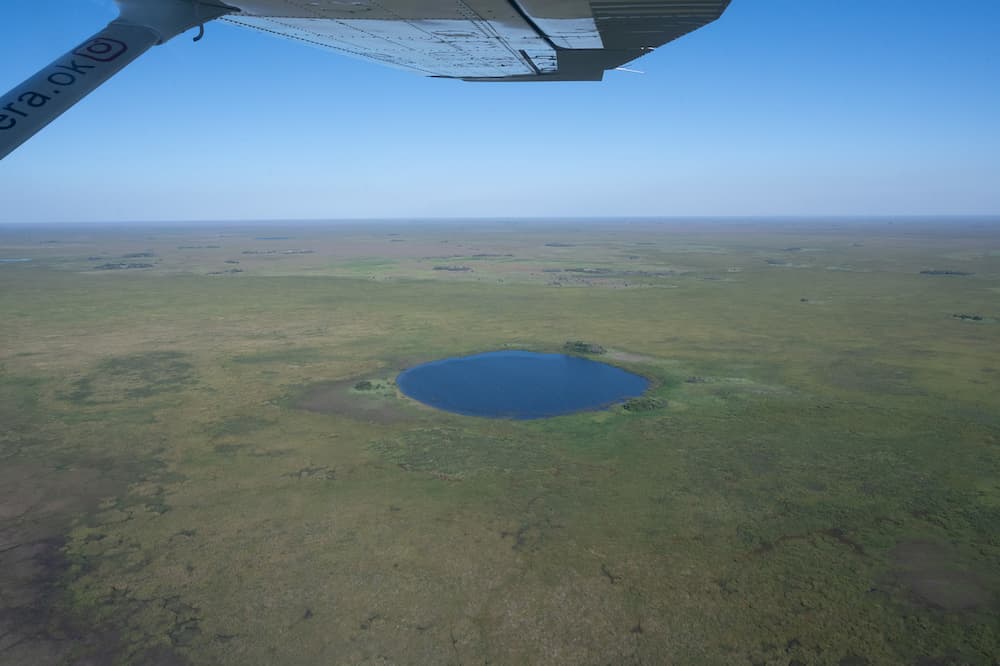
The site itself is comprised of two different enclosures on national park land. The areas border a lake and are “totally natural, really, really great places,” Owens says. His arrival to the site was especially memorable.
You fly into this field site called San Alonso, and that was the best field site I’ve ever been to. It was incredible. So you fly in a four-person plane and land on the grass strip, and there’s a grove of trees with moss hanging down and all these parrots living in them. You walk up to a very old looking, wooden building with a really long porch in the front and a screened-in area over where the team from Rewild Argentina live. So we’re just hanging out. It’s gorgeous. We’ve got rocking chairs in the front there. And then suddenly we see collared peccaries running through the grass, eating things. I run to grab my camera. They can be very dangerous, wild peccaries. So I’m kind of far away and I’m sitting on the ground with my legs out in front of me and getting low so I get some nice photos. And suddenly one of them sees me and looks at me and just walks straight towards me. And I thought, Oh shoot. As she walks straight at me, I’m trying to back up calmly and then somebody yells out, “They live here, it’s okay!” It turns out she loves people because she was hand raised before being rehabbed and released back into the wild. So she just comes up and starts sniffing my boot. And then I stand up and she’s just excited, like happy. She comes over, flops down onto her back so I can rub her stomach. It was magical. It’s a place I want to go back to. It was magical. Just all the birds flying all around and the trees with moss hanging down. Beautiful.
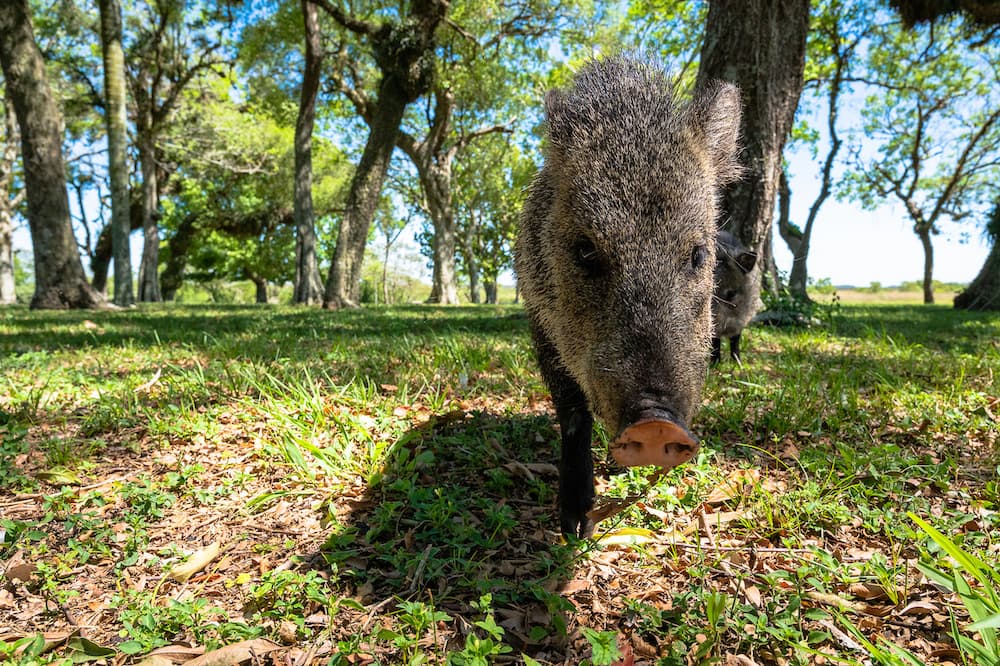
El Impenetrable
After visiting Iberá, the group drove northwest to El Impenetrable National Park, where Dr. Owens stayed several days in “a very traditional looking kind of field camp,” he says. A giant otter had been spotted in a lagoon on site, so he settled in to a framed, canvas tent housing a couple of beds and a nice bathroom and shower, with a porch just a few feet away from the lagoon. It was comfortable, he says, but hot. “It was 110 degrees. We were there during the dry season, and they’ve had a three-year drought, so the water levels were super low. The mosquito levels were really low and it was still almost the most mosquitoes I’ve ever seen in my life.”
“It made me remember how much I love the field and the camaraderie,” Owens says. “Seeing those field teams that are out there living together for weeks on end in these really great but really hard conditions, where you build those tight bonds quickly, made me miss being in the field a lot. You go out and do some interesting and important work, and then you get back and drink an Argentine beer and have great dinners and talk about field stories. That is all really incredible.”
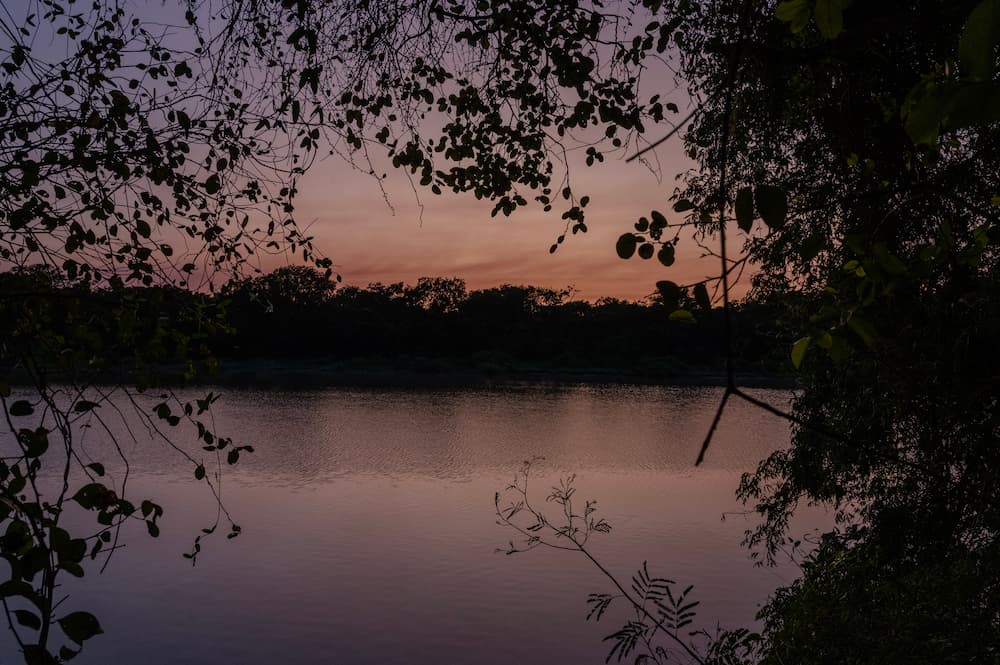
Being in such an iconic setting adds to the impact of field experiences. The camp at El Impenetrable is laced with elevated, wooden walkways to keep workers off the mud during the wet season. Along with the sleeping tents, the site has one big room that’s both the laboratory and the kitchen, housing screens with all their monitoring equipment and two long dining tables, gas stoves, and freezers for samples and food. Because it’s a several-hour drive to get to the closest town that has a grocery store, they have to bring everything in.
Kayaking in the oxbow lake is a favorite pastime and the best way to look for glimpses of the giant otter. “The amazing thing is I get to go do this, where we’re building serious programs and the relationships to do really important work. I mean, five years from now, there could be giant otters back in a sustainable population in Argentina because of this work,” Owens says. And being there in person is crucial.
“Being there and actually seeing the field sites, seeing the work that they’re doing well and the things that we could contribute to, is important. We have to do the site assessment before we send any animal down there, but it’s also a really good way to identify potential opportunities for us to partner in more meaningful ways. We don’t want to just send a giant otter down there and then call it a day, we want to contribute to increasing their chances of success, even if the chances are already really high.”
Temaikèn Biopark
After El Impenetrable, Dr. Owens traveled south to Buenos Aires and Temaikèn Biopark, an AZA-accredited zoo with whom the L.A. Zoo enjoys a working relationship. There Owens joined a crew releasing a maned wolf into the wild. The wolf was taken in as a pup after its mother had been killed and was raised at Temaikèn for the first year of its life.
We drove ten hours up north, back to where I’d just come from. We were in the middle of a field, and they said, ‘Yep, this looks good’. We got out they took the big crate that the pup was in off the back of our truck, put it down. So they asked, ‘Alright, are you ready?’ And none of us were ready with cameras and whatnot. And so I got my phone, I put it up to get a slow motion video. I had to just get a big piece of cow dung that was dry and lean my phone up against that.
Within literally two minutes they had the thing open, it ran out, we put the container back in, and we left. So a ten-hour drive for a five minute process of releasing it, because they’re so good and execute releases so often.
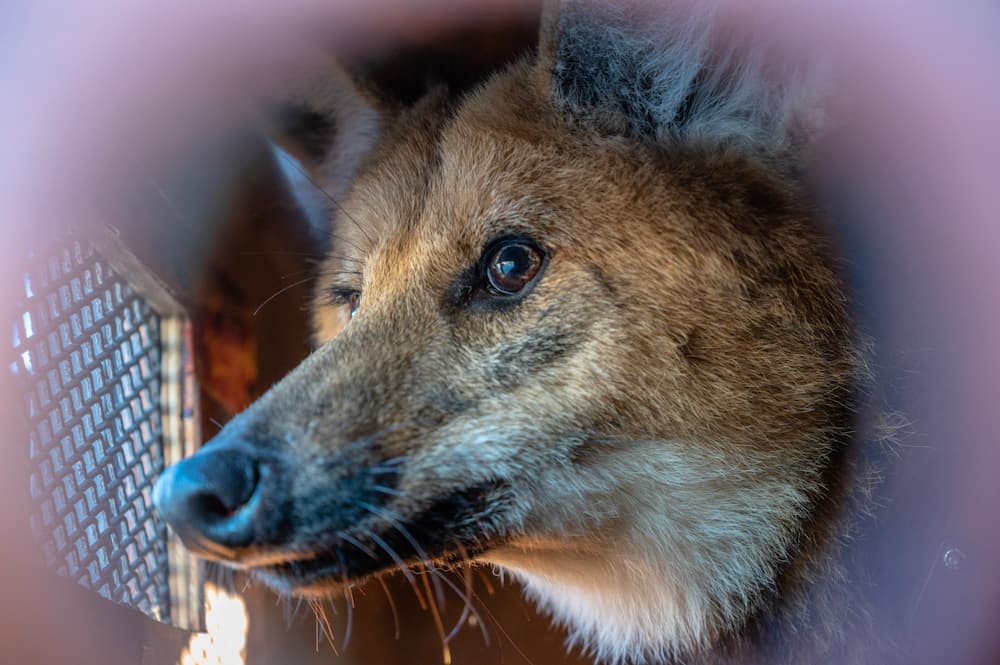
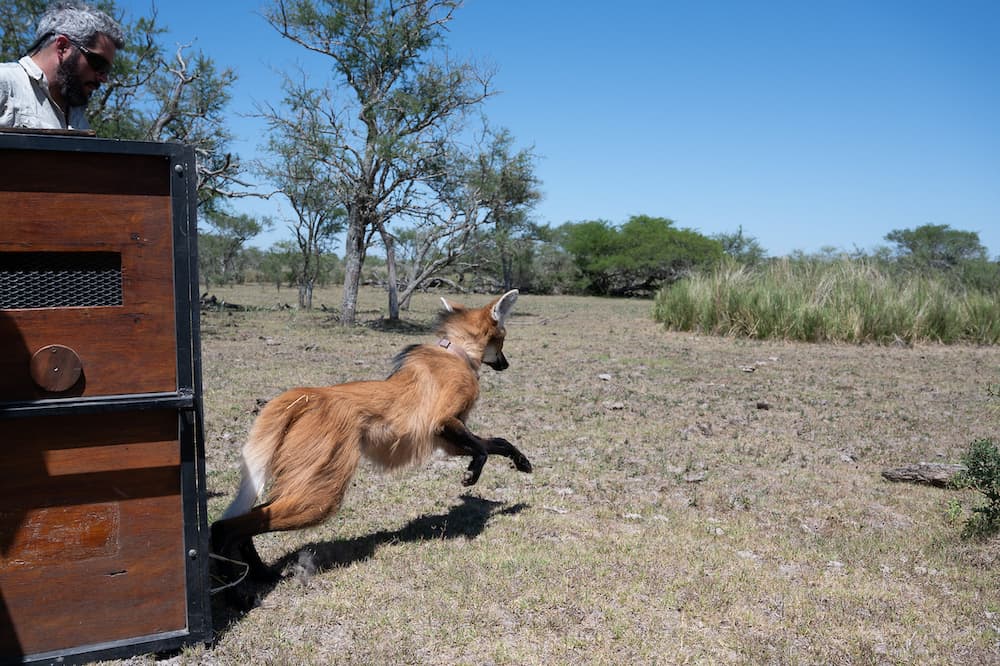
Those kinds of experiences and the relationships that are built out of them don’t happen from afar. “The root of all real conservation is in trust and meaningful partnerships,” Owens believes. “So how do you build trust? A lot of it’s just face time and doing and talking and trying. Being there at the start. And so going, talking with everybody, spending time together—you can’t get that from a four-hour Zoom call. It’s just impossible. But you make close friends when you’re flying in a cramped plane together or sitting in the backseat of a car for ten hours to go out to a field site. It bonds you together quickly.”
The Road Home
So what happens next after a huge experience in the field? How does it inform and change the work that gets done back home? Owens looks at the field work as just the beginning. “Coming back, I’ve got notes about all these things that I collected while I was there. And now it’s going back to say, ‘Okay, well, what resources do we have to potentially solve these challenges or to work together on to solve these challenges?’” he says. “Is it in our veterinary team? Is it with our learning and engagement team? Is it with our animal care team or construction? Is this something that our conservation committee could work on? Is this really a fundraising issue? You’ve got the fire hose, and it’s spraying all over, and you just go through the process of narrowing it down to the things that we could actually uniquely help solve.”

Whatever the solutions are, they’ll come with the support of Dr. Owens’ colleagues at the Zoo, who represent a local branch of the global conservation community and a legacy he’s well aware of. “The fact that I’m doing these things in a place that already helped to stop the extinction of California condors—which is one of the greatest stories of conservation successes, and I’m helping to build on that legacy—is really, really incredible.”

